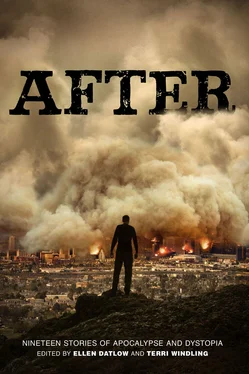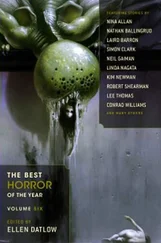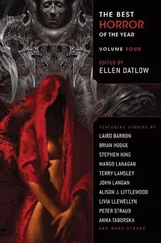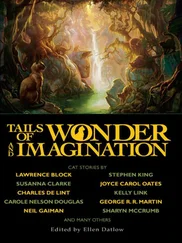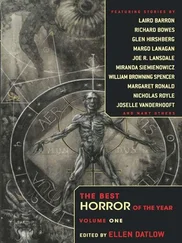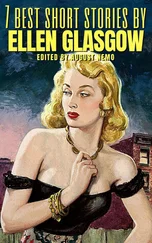“Teenagers’ lives are constantly defined by rules, and in response they construct their identities through necessary confrontations with authority, large and small. Imagining a world in which those authorities must be destroyed by any means necessary [as per dystopian fiction] is one way of expanding that game. Imagining a world in which those authorities are utterly gone [as per postapocalyptic fiction] is another.”
If you’re a longtime reader of dystopian fiction, you’re probably already familiar with the genre’s history, but for those of you who have just discovered the field—perhaps through Uglies , or The Hunger Games , or another YA dystopian book—you might be interested in knowing a bit more about where this type of fiction comes from.
The history of dystopian fiction begins with its polar opposite, utopian fiction: tales that envision a better world and more perfect society. The word “utopia” itself (from Greek roots meaning “no place” or “good place”) first appeared as the title of a fantasy novel (or so it would be called today!) by Sir Thomas More, the great writer, philosopher, statesman, and Catholic martyr of sixteenth century England. More’s Utopia is the story of a traveler to an imaginary island country where private property is unknown, women are educated alongside men, and religious tolerance is, if not perfect, then at least more advanced than it was in More’s own time: all radical ideas that were safer to couch as fiction than to espouse in real life. Although utopian texts existed long before More coined his famous name for them (such as Plato’s Republic from the third century b.c.), it was More’s book that went on to inspire the great utopian tales of the nineteenth century (which critics have dubbed “the utopian age”): Erewhon by Samuel Butler, Looking Backward by Edward Bellamy, Gloriana by Lady Florence Dixie, News from Nowhere by William Morris, and many others. These, in turn, directly inspired the birth of the dys topian genre.
The first recorded use of the word “dystopia” (derived from Greek roots meaning “bad place”) comes from a political speech by John Stuart Mill in 1868, who used the word to describe utopia’s opposite: a place where attempts to create an ideal society had gone badly awry. (He was talking about the English government’s land policy in Ireland.) When we turn from politics to fiction, although we can find dystopian elements in a number of early texts, dystopian fiction as a genre does not begin until the nineteenth century, where it emerged in reaction to those utopian books so beloved by Victorian readers. Distrustful of the bright, lofty visions conjured by Bellamy, Morris, and the other utopianists, writers such as Anna Bowman Dodd, Ignatius L. Donnelly, Eugen Richter, and H. G. Wells published popular books in the opposite vein: dark, satiric, cautionary tales of utopia gone wrong. Most of these writers are forgotten now—except, of course, for the great H. G. Wells, for it was Wells who established the dystopian genre as literature (and not just polemic) with now-classic books like The Time Machine (1895) and When the Sleeper Wakes (1899). The prolific Wells also wrote utopian novels—such as A Utopian Tale (1905) and Men Like Gods (1923)—which had only mixed critical success and are rarely read today. Aldous Huxley, in fact, disliked Men Like Gods so much that he sat down to write a parody of it, producing his now-classic dystopian novel Brave New World (1932), set in a futuristic land of consumerism and technology pushed to soulless extremes.
Although less well known than the novels of Huxley or Wells, We by Yevgeny Zamyatin (1924) is another classic of early dystopian literature: a chilling tale set in a bleak totalitarian society inspired by the author’s experiences during the Russian Revolution of 1905. Zamyatin’s novel, in turn, profoundly affected a young English writer and journalist named Arthur Eric Blair, who would go on to become the most widely read dystopian writer of all time. We know him better under his pen name: George Orwell, author of the dystopian masterpiece Nineteen Eighty-Four (1949)—a book so terrifying, powerful, and prescient that it’s been embraced by readers of every generation since, despite the fact that the year 1984 has long since come and gone.
After Orwell (and perhaps because of him), from the 1950s onward, the dystopian genre grew exponentially, with a dizzying number of excellent books found both on the mainstream literature shelves and on the science fiction shelves (where teens were especially likely to spot them), including Fahrenheit 451 by Ray Bradbury (1953), Lord of the Flies by William Golding (1954), The Chrysalids by John Wyndham (1955), Harrison Bergeron by Kurt Vonnegut (1961), Make Room! Make Room! by Harry Harrison (1966), Stand on Zanzibar by John Brunner (1968), The Lathe of Heaven by Ursula K. Le Guin (1971), Flow My Tears, the Policeman Said by Philip K. Dick (1974), and The Handmaid’s Tale by Margaret Atwood (1985), to name just a few. (If you’re unfamiliar with any of these books, please seek them out. You’ll be glad you did!)
In the 1980s and 1990s, a new form of dystopian fiction emerged: tales written specifically for young adult readers, adding younger protagonists and coming-of-age themes to a genre that many teens had already embraced in its adult form. Recommended early works of YA dyslit include The Green Book by Jill Paton Walsh (1981), Futuretrack 5 by Robert Westall (1984), The Devil on My Back by Monica Hughes (1984), Children of the Dust by Louise Lawrence (1985), The Obernewtyn Chronicles by Isobelle Carmody (begun in 1987), The Giver Trilogy by Lois Lowry (begun in 1993), Shade’s Children by Garth Nix (1997)…and too many other fine books for us to even begin to list them all. (Google “Young Adult Dystopian Fiction” and you’ll find many good lists of these older works.)
By the early years of the twenty-first century, YA dyslit was well on its way to becoming the exceptional field that it is today, with a wide variety of authors exploring dystopic themes in many, many different ways. The explosive growth of the field has been helped, of course, by the commercial success of books by M. T. Anderson ( Feed ), Paolo Bacigalupi ( Ship Breaker ), Malorie Blackman ( Naughts and Crosses ), Suzanne Collins ( The Hunger Games ), Cory Doctorow ( Little Brother ), Nancy Farmer ( The House of the Scorpion ), Patrick Ness ( Monsters of Men ), Carrie Ryan ( The Forest of Hands and Teeth ), Scott Westerfeld ( Uglies ), and other best-selling authors. But some of the new up-and-coming dyslit writers, too, are producing good work that promises to push the field into new directions in the years ahead—including some of the lesser-known writers published in this book, whose novels we encourage you to seek out.
Of course, when any field enjoys popular success, speculation promptly begins on just how long such a “fad” will last—with the doomsayers insisting it will all soon be over, or is over already. Here’s our prediction: modern dyslit is not disappearing anytime soon because it’s not a passing fad, it’s a literary form. And it’s a form that is still evolving—that is not even close to finding its limits yet—as it shapes itself to the hopes, fears, dreams, and nightmares of each new generation.
Richard Boweshas published five novels, two collections of short fiction, and over fifty stories, winning two World Fantasy Awards, the Lambda Award, the International Horror Guild Award, and the Million Writers Award. Recent and forthcoming stories appear in The Magazine of Fantasy and Science Fiction , Realms of Fantasy , Icarus , Bewere the Night , Naked City , Nebula Awards Showcase , Supernatural Noir , Wilde Stories , and Blood and Other Cravings . Rick lives in New York City, and can be found online at www.rickbowes.com.
Читать дальше
